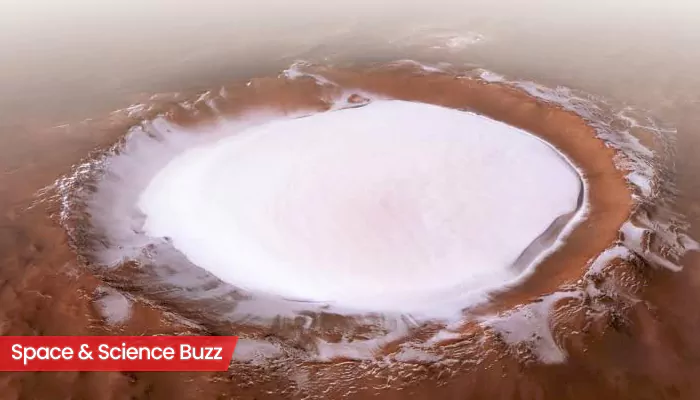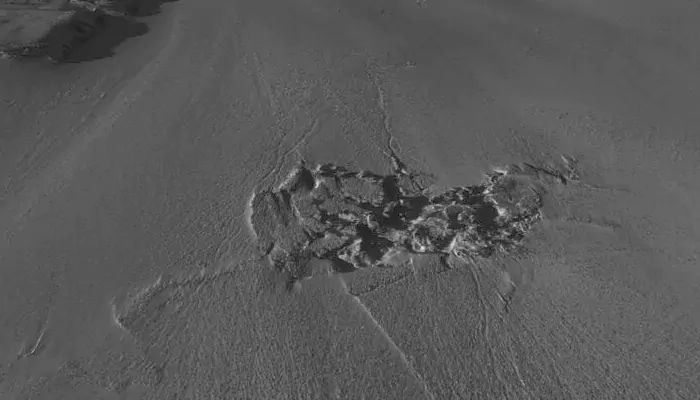
Here are today’s most important updates from the realm of Science and Space.
New findings suggest that glaciers on Mars are composed of more than 80 per cent pure water ice, with some estimates suggesting they are nearly pure ice. This high purity level is consistent across different glaciers and hemispheres. While exploring the Martian surface, scientists have mostly seen glaciers coated in dust on the slopes of the mountains of Mars. Existing studies have suggested that the glaciers were comprised mostly of rock and around 30% ice, or debris-covered glaciers that were more than 80% ice. The latest discovery is crucial for future human missions to Mars, as accessing clean water ice could provide a reliable source of water, oxygen and rocket fuel. Extracting water from pure ice would be more energy-efficient than extracting it from dirty ice.

Scientists have discovered a previously-undetected flood under the Greenland ice sheet that spilled out with such force that it burst through nearly 300 feet (91 meters) of solid ice. The phenomenon occurred in 2014 and caused 24 billion gallons (90 billion liters) of meltwater to punch out from a subglacial lake under the ice sheet. It is the first time such an event has ever been documented. It was the aftermath of a huge flood of water escaping from underneath the ice. Greenland's ice sheet is one of only two permanent ice sheets on Earth, the other being the Antarctic ice sheet. It is nearly three times the size of Texas, covering roughly 656,000 square miles (1.7 million square kilometers), according to the US National Snow and Ice Data Center (NSIDC) in Colorado, and loses an estimated 33 million tons (30 million metric tons) of ice every hour.

(Credit: BBC)
A 2,500-year-old mystery from southern Italy has finally been solved: the sticky residue found inside a set of bronze jars at an underground shrine in ancient Paestum, which was intended as an offering to the gods. This breakthrough ends decades of debate among archaeologists and chemists, who, using less advanced techniques, had long assumed the substance was merely an animal fat or beeswax. The mysterious object was honey. Leveraging advanced mass spectrometry and gas chromatography, the team detected clear biomarkers: degraded sugars, hexose compounds, and major royal jelly proteins, all consistent with aged honey and honeycomb.

Research has found that men born in the summer season are more likely to be depressed later in life. Notably, this was only found to be true for men and not women. This is because of the environmental risk factors the mothers are exposed to throughout the year, which differ in various seasons. The researchers wanted to fill the gaps in the knowledge around one's birth timing and mental health. The lead author concluded that it all possibly boils down to "the environmental conditions of the mother during pregnancy." Things like temperature and sunlight vary across the year, possibly impacting the baby. To get the full picture, researchers plan to delve into other factors, like the mother’s diet and circulating hormone levels.